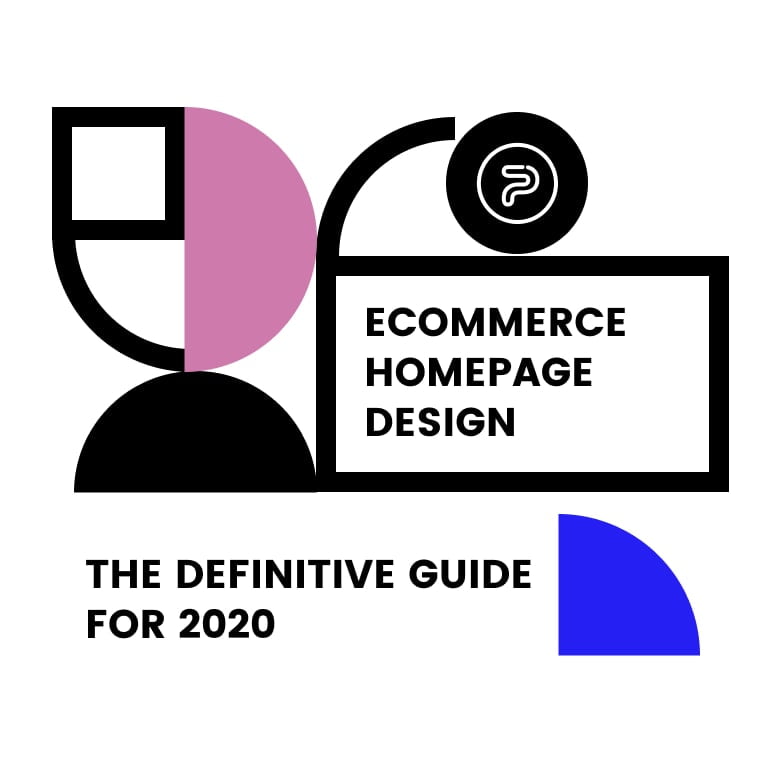We all know that e-commerce is a rapidly growing industry with constant changes and fast-paced trends on the horizon. So, to succeed and stand out, having an eye-catching and practical design is crucial for your success. Selling online isn’t simply about pushing products on the web. It’s a form of art on its own, with its own set of rules and trades.
First of all, when you sell online, you need to make sure that your brand is adequately represented on your website and that you add value to every single page on it.
This is why having a good design is crucial for success and must be prioritized when it comes to preparing your website either. If the design is lacking in a few aspects, you’re running the potential risk of losing a significant number of new customers and sometimes, even regulars.
While it’s true that there are a few other crucial elements that can make or break your e-commerce success, your website design is one of the main ingredients for exceptional user-experience.
So, how to stand out from the rest of the crowd in the sea of e-commerce websites? Here’s our definitive guide for the upcoming year!
Consider Getting a Custom-Made Website
Custom websites might seem the more expensive route to take at first, however, it can be a better option in the long run.
First of all, digital marketers generally agree that custom sites give a better ROI than their template-based counterparts and when your business is e-commerce exclusively, going custom might be a good decision.
The drawback to having a website custom made is the higher cost and the timeliness of preparation. Maintenance costs may also be higher than if you were to use templates, however, there’s a catch. Custom sites are generally better optimized for SEO, different devices, and overall, give a better user experience. Plus, you have way more options at your fingertips. With a professional team of web developers and designers, you can easily create a stunning website with the newest, most groundbreaking features.
Another pro for custom websites is better support. While it is true that templates have come a long way, and they are compatible with most features out there, having an experienced web development agency behind your back can save you a lot of time, not to mention headaches too. Template customer support can also be efficient, however, it may not be entirely tailored to your needs and basic web-dev knowledge.
Responsive Design All Across the Board
You‘re probably familiar with the fact that more and more users conduct searches and make purchases on their mobile devices. This shouldn’t be coming to you out of the blue, the headway of mobile devices has been pretty prominent in recent years.
In accordance with these trends, having a mobile-friendly and fast-loading site will ensure that your potential costumers stay long enough on your website to make a purchase. According to Statista’s 2019 study, 73 percent of all sales on e-commerce platforms will be on mobile. Considering this, it’s pivotal that your site performs well on all devices.
When we’re here, we should also mention the importance of user-experience. Today, users prefer individualized features and more engaging platforms. With a custom made website you can pull this off.
On the same note, loading-speed and SEO-friendliness are also important features that shouldn’t be neglected. People won’t stick around on your site if it takes too long to load and if they don’t rank high on search engines, chances are, your target audience won’t even notice your website.
Luckily, if you opt for a custom-made website, these things won’t cause you headaches since a professional web-development agency will create you a platform that will perform fast, optimized for all devices and search engines.
Embracing Minimalistic Flat Design & Material
Minimizing the info and cleaning up your website will continue to be a key design feature for all e-commerce site owners. With this, you’ll achieve the “two-dimensional” or flat look which can dramatically improve user-experience not just with easier site navigation but with better loading time.
Embracing the innovative nature of material design can also be a good idea. This “digital material” can expand and reform, with physical surfaces and edges. For now, it’s an Android-oriented design language, which primarily supports mobile onscreen touch experiences. It embraces natural motions that mimic real-world objects and cue rich features.
Augmented Reality (AR)
AR is a fast-developing trend that blends digital elements into the real world seamlessly. Via smartphone, AR technology superimposes digital imagery into the real world giving the user a highly engaging experience.
This may sound a bit “too much” for e-commerce websites, however superimposing your products into your customers’ view can help them make smarter purchase decisions and they will also get richer with a one-of-a-kind experience.
AR can make checking shirt and jeans size much easier, not to mention, it can help a lot with buying the perfect piece of furniture because your customer can already see some of the most important key features of the product (scale, size, and color).
360° Product Images and Product Photo Search
Allowing your buyers to see your products from every possible angle is a trend that will surely play a huge role in generating sales in 2020. All you have to do is mount your camera on a tripod and take pictures of your products from all angles. When this is done, edit the images with a video player to create a 360° view.
Another outstanding feature would be embracing product photo search. By taking advantage of Google Lens technology, with high-quality images of your products, with well-thought-out and optimized descriptions, keywords and brand names, you can appear as a recommended retailer whenever somebody with Google Lens points their phone toward a product you carry.
You can also use something fairly simple to your advantage, like image search, which is also gaining popularity among shoppers.
Simply just take photos of your products and users can find them up in Google’s image search. However, for this, you need to optimize the images of your products for SEO.
Product videos
As you can see, providing interactive content will be a leading trend for 2020. Quality product videos can give your buyers a better look at their potential purchase and can even actually convince them to buy from you because of a better user experience and can help you with building trust with your shoppers. Product videos are a great way to stick out from the crowd and to increase sales in general.
Using Social Logins and Amazon Pay To Your Advantage
Instead of filling out multiple forms and giving credit card info, buyers prefer a more seamless checkout process with fewer complications.
By using Facebook or LinkedIn logins on your website your visitors can create accounts and make purchases faster and more conveniently. These accounts would already contain all the necessary info you need, like payment information and shipping address. This feature isn’t only time-saving, but it can also help you build trust since people are generally okay with using social logins.
Another great way to save time is by integrating Amazon Pay as a feature onto your site. It’s basically the same process – your customers purchase on your platform through their Amazon account. This makes it faster and easier for people to shop and they don’t need to register on every single site, including yours.
Related Items and Wishlists
Displaying related items is something that has been around, and it’s basically the digital version of upselling. The seller recommends additional goods to the person who is already interested in buying one of their products.
This “would you want fries with that” technique in the digital realm manifests by displaying similar products on your website when your customer has already placed an item in their cart.
Wishlists are another great feature you can incorporate. They keep customers coming back to your website to run tabs on what they’d like to buy and there’s a lesser chance of them forgetting about it. Making the wishlist shareable is another great idea since your products can reach an even bigger audience.
Consider Automation
It’s a trend which can make your life a lot easier. By using specific software, like Hubspot you can simply create email and social media campaigns and ads that you can schedule ahead of time.
You can also create personalized “campaigns” too by creating email marketing sequences that get triggered by specific buyer reactions (like signing up or abandoning cart). You can also create different promotions based on, let’s say, demographics and such.
Automation lets you help personalize online shopping for your customers without having to answer hundreds of emails every single day.
Pop-ups
We know that pop-up ads used to be despised by internet users and that they are mostly still hated today, however, by using them in the right place at the right time, you can get new newsletter subscribers or you can prevent potential buyers to leave your site. They can be used to your advantage, as long as you use them wisely.
Finishing Thoughts
Getting the most out of your e-commerce design service requires you to know your target audience, know how to represent your brand online and to know how to exploit the latest design and tech trends on your website.
Embracing all of them might mean a lot of extra work but you have to agree, these features are all pretty much game-changers. Having that in mind, make sure to implement the changes that really caught your eye first then maybe consider adding some more new cool features along the way.





